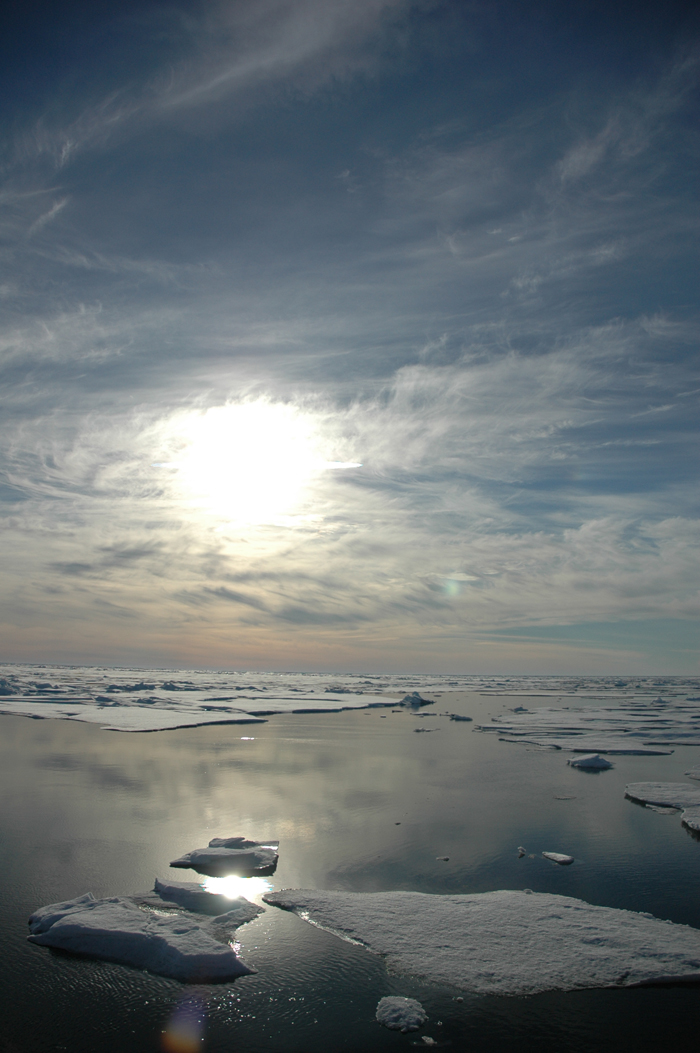Arctic Sea Ice Melt Disrupts Weather Patterns

Shrinking Arctic sea ice is shifting polar weather patterns, especially in fall and winter, a new climate modeling study finds.
For the study, researchers looked at weather patterns in 2007, when sea ice covering the Arctic Ocean hit one of its lowest summer extents since satellite tracking began in the late 1970s.
In fall and winter, when sea ice would normally insulate the ocean from frigid Arctic air temperatures, the small ice pack meant lots of heat could escape from the ocean into the atmosphere, the study found. The heating changed atmospheric circulation patterns in the Arctic, said lead study author Elizabeth Cassano, a climate scientist at the Cooperative Institute for Research in Environmental Sciences (CIRES) in Boulder, Colo. The results were published May 21 in the International Journal of Climatology.
"What we saw, particularly in the fall and winter, was a decrease in [atmospheric] pressure over the areas of open water," Cassano told LiveScience. Areas of high and low pressure drive weather, with low pressure producing stormier weather and high pressure leading to clear, calm days, Cassano said. The group's computer model generally agreed with weather records from the latter half of 2007, according to the study.
While the summer ice melt had a significant effect into the winter, there was little change in weather patterns in early 2007, before the ice pack shrank, the study found. However, Cassano points out that the climate model doesn't include a major high-pressure system that was in the Beaufort Sea north of Alaska and played a role in the big ice melt. Its absence could affect the modeling results.
The researchers now plan to examine how the feedback between sea ice and the atmosphere alters weather in the United State and other regions, Cassano said. "There's an open question of how these changes that we see in the Arctic influence the weather that we see here in the mid-latitudes," she said.
Email Becky Oskin or follow her @beckyoskin. Follow us @livescience, Facebook & Google+. Original article on LiveScience.com.
Sign up for the Live Science daily newsletter now
Get the world’s most fascinating discoveries delivered straight to your inbox.











